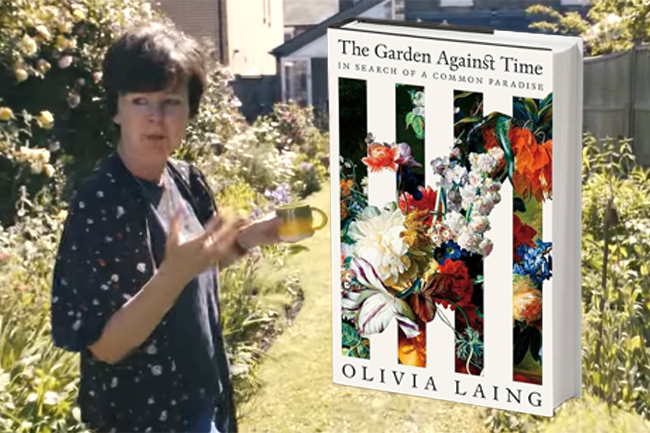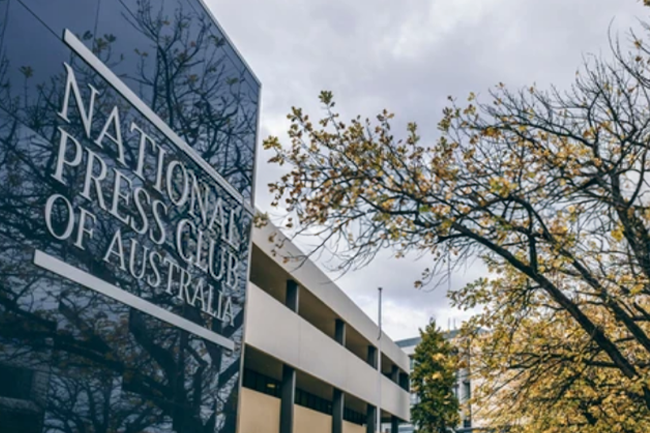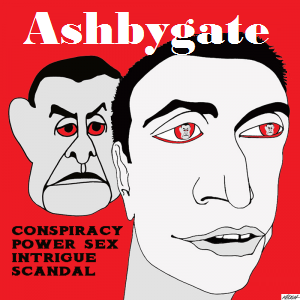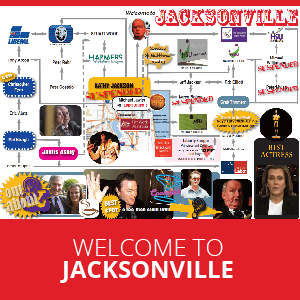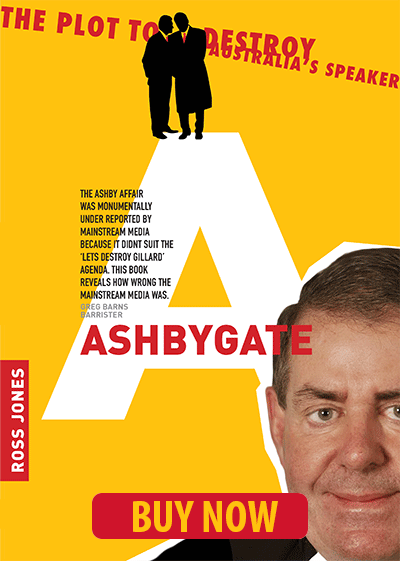Through Olivia Laing’s The Garden Against Time, the garden becomes more than a refuge — it’s a living battleground of beauty, class and conscience, writes Dr Rosemary Sorensen.
GARDENING IS HEALTHY, good for your mind and body, and a sensible and valuable way to spend your time.
Yes, all that’s true and yet...
Reading Olivia Laing on gardening makes me yearn for those TV shows with jolly presenters gesticulating woodenly over the compost pile to try for something a little more ambitious.
Do we have an equivalent of Olivia Laing, who, you’d imagine, couldn’t clean her teeth without pondering the history, the literature and the social meaning behind the activity?
The late ABC TV presenter Peter Cundall was jovial and practical, and he also hinted at the moral philosophy behind his passion for plants. Without waxing lyrical, he seemed to want to show – by doing – how social good depends on understanding our relationship to cultivated nature.
At the other end of the scale of Australian celebrity gardeners, there are those for whom it is all about expensively acquired aesthetics — the super-famous “gardener” who directs the work without actually getting their hands dirty.
Publishers will point to how well the posh gardening book sells, with its sumptuous images of vistas that took a bulldozer, truckloads of soil, a team of workers and enough seedlings to re-vegetate a whole suburb to create. That, the marketing mob will say, is what people want. The figures don’t lie (which of course, is a lie, but never mind).
Laing is, it’s true, not your average writer. Over half a dozen books – from To the River, about walking the length of the Ouse in which Virginia Woolf drowned, to the wonderfully weird Crudo, which re-imagines the artistic life of Kathy Acker – she almost perfects a writing methodology combining social and personal history with critical analysis, both historical and contemporary. She has a seemingly easy knack for telling us stories that proceed smoothly along an interesting path, pausing to draw our attention to what we might otherwise have overlooked.
A small negative: Laing's The Garden Against Time does feature rather too many lists of the botanical names of plants, which could be useful for those keen to create a garden in Suffolk, where she now lives. Botanical names have a poetic lilt when strung together like beads, but Laing’s listing becomes tedious in an otherwise absorbing description of how she and her partner Ian bought a house with a neglected garden, which turned out to have been created by a well-known gardener.
The first of Laing’s literary historical references is conjured up as she describes how they’d seen the house and its neglected garden, decided immediately it was what they wanted, then, like Milton’s description of the Earth hanging suspended from a chain, were forced by the COVID years to put their plans on hold. That delay gives her time to search out and read about how Mark Rumary created this garden, which was the only one he designed for himself out of the many he was commissioned to create.
And at that point, too, the first of her observations about the garden as a site for social analysis is made. During the COVID years, in the UK, as here in Australia, growing plants for food and recreation became an important activity. At the same time, grand gardens with limited public access became symbols of class inequality, bringing to the surface debate about whether “politicising” the desire for and creation of beautiful gardens – which require wealth, privilege and often only exist through the exploitation of oppressed people – is acceptable.
A richly productive line of enquiry opens up, seemingly by chance (the rigours of COVID shutdowns), treated with the well-researched curiosity that is the hallmark of Laing’s writing. She decided that she’d aim to restore Rumary’s garden as part of her project to ‘explore both types of garden stories: to count the cost of building paradise, but also to peer into the past and see if I could find versions of Eden that weren’t founded on exclusion and exploitation, that might harbour ideas that could be vital in the difficult years ahead’.
Not only do we go with Laing into Milton’s version of the productively tended Garden of Eden, but also the grand classical English gardens designed by Capability Brown, then to the looser style of William Morris’ inspirations.
Laing disparages the strict and plant-punishing formality of the famous Brown garden style: she also describes the wider social implications of these estates. The idea was to clear the view, which meant displacing cottages and even whole villages, chopping down trees, installing picturesque ponds and basically snaffling the land so it was inaccessible to everyone else.
Laing visited a number of these “landscaped” gardens with her father from childhood through to recent times. One of them, Ditchingham, she remembers from the late WG Sebald’s extraordinary The Rings of Saturn, and it turns out that her Mark Rumary had been called in to repair damage after a violent storm had destroyed trees in the park.
It's discovering this and then returning to read the chapter in The Rings of Saturn where Sebald walks through this part of Suffolk and visits Ditchingham, that enables Laing to clarify what it was that had been troubling her about the ideal garden as planned by the very rich and powerful.
Laing writes:
That autumn, I was reading John Barrell’s revelatory book, The Idea of Landscape and the Sense of Place, alongside Sebald, and together they were opening my eyes to a network of power relations that isn’t so much hidden in the landscape as expressed by way of it.
An entire ruling class ideology was embodied In this particular version of paradise.
This ideology was, you could argue, democratised in Australia. The right to a lawn out front with rose bushes and a backyard with a veggie patch and space for the Hills Hoist, as well as a mini cricket pitch, was a big part of the Aussie family mythos. The house itself was not so consequential, until, post-war, with the swing from “British values” to American influences piped into homes via television, the need for a yard morphed into the need for a breakfast bar and “family” room. Can you think of a single American sitcom where someone gardens?
The Open Garden programs that are so popular are a mixed blessing, certainly not without value, as people who love gardening show the fruits of their labour to other people. I visited Paul Bangay’s Stonefields garden near Kyneton on one such open-garden weekend back before he sold it and it was awful, from the serried ranks of expensive cars in the makeshift paddock park to the manicured terraces around the glassy house. This is the modern equivalent of the aristocratic estate, an expensive fancy that aims to be unattainable except for the very rich.
It’s not gardening. It’s a vulgar display of celebrity and money.
Even in Laing’s garden, which she works so hard to restore, literally getting her hands dirty and with gratitude that she has been able, through her own work and good fortune, to afford this place and this garden, the expense of the enterprise is steep. However, her reading research into the writing of historical figures such as the 19th-century poet John Clare enables her to describe the difference between the garden built to maintain social superiority (which is what I felt at Stonefields) and the one that is created to nurture not only nature but also goodness, both moral and physical.
Laing, in fact, does enter her Suffolk re-found garden into a prestigious charity-supporting open garden program. She has what she says is the best day of her life when the garden is in luscious bloom and people gather for afternoon tea surrounded by the fruits of her labour. Everything comes together seemingly to prove the positive value of a beautiful garden.
But then, drought bedevils that English summer, and she watches things wither and agonises over the moral dilemma of using water in a garden. It changes her thinking about the very idea of a garden, what it’s for and how it relates to humanity’s place in the natural world.
Digging, turning over the fields of history as well as her own garden soil, Laing doesn’t so much use gardening as a metaphor but embeds gardening into human behaviour, a map of the mind and soul. Seasons change, and with the flow of time come different needs and challenges. Behaviours that best and most ethically adapt to these needs and challenges are beautifully documented in The Garden Against Time.
From acquisitive English land barons who had more than they would ever need but kept acquiring more, to the Italian Origos, who responded to the vile destruction of the First World War by turning their house and garden into a place of refuge, Laing finds in these examples, as well as in Derek Jarman (whom she has written a book about and whose garden on the Dungeness shingle shore she revisits many times in this book) and in Milton’s writing, fertile ground for contemplation. All the while, she moves the story in time with descriptions of her work in the garden as well as a subplot about her father and his health struggles.
Laing comes to think, borrowing from Milton’s contemporary, Andrew Marvell, that the garden is a clock, but one that ‘moves in unpredictable ways, sometimes stopping altogether and proceeding always cyclically, in a long unwinding spiral of rot and fertility’. She learns to recognise that the ‘fantasy of perpetual abundance’ is a dangerous illusion.
Setting to work on making her own garden both more resilient and less perfect, she extrapolates what she’s learned into a manifesto for survival:
Parks instead of new airports, allotments over motorways, a grand reinvestment in our public resources, an understanding that the garden – like the library and the hospital – is what makes all our lives possible. We need gardens and the life they support established everywhere if we are to survive, and they must extend beyond the private realm, to form part of the common wealth, while retaining their intimate and wayward qualities where individual creativity can flourish.
Dr Rosemary Sorensen is an IA columnist, journalist and founder of the Bendigo Writers Festival.
 This work is licensed under a Creative Commons Attribution-NonCommercial-NoDerivs 3.0 Australia License
This work is licensed under a Creative Commons Attribution-NonCommercial-NoDerivs 3.0 Australia License
Support independent journalism Subscribe to IA.



